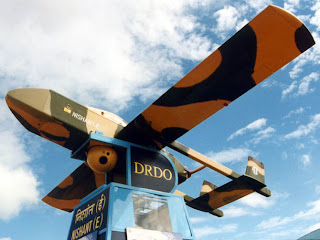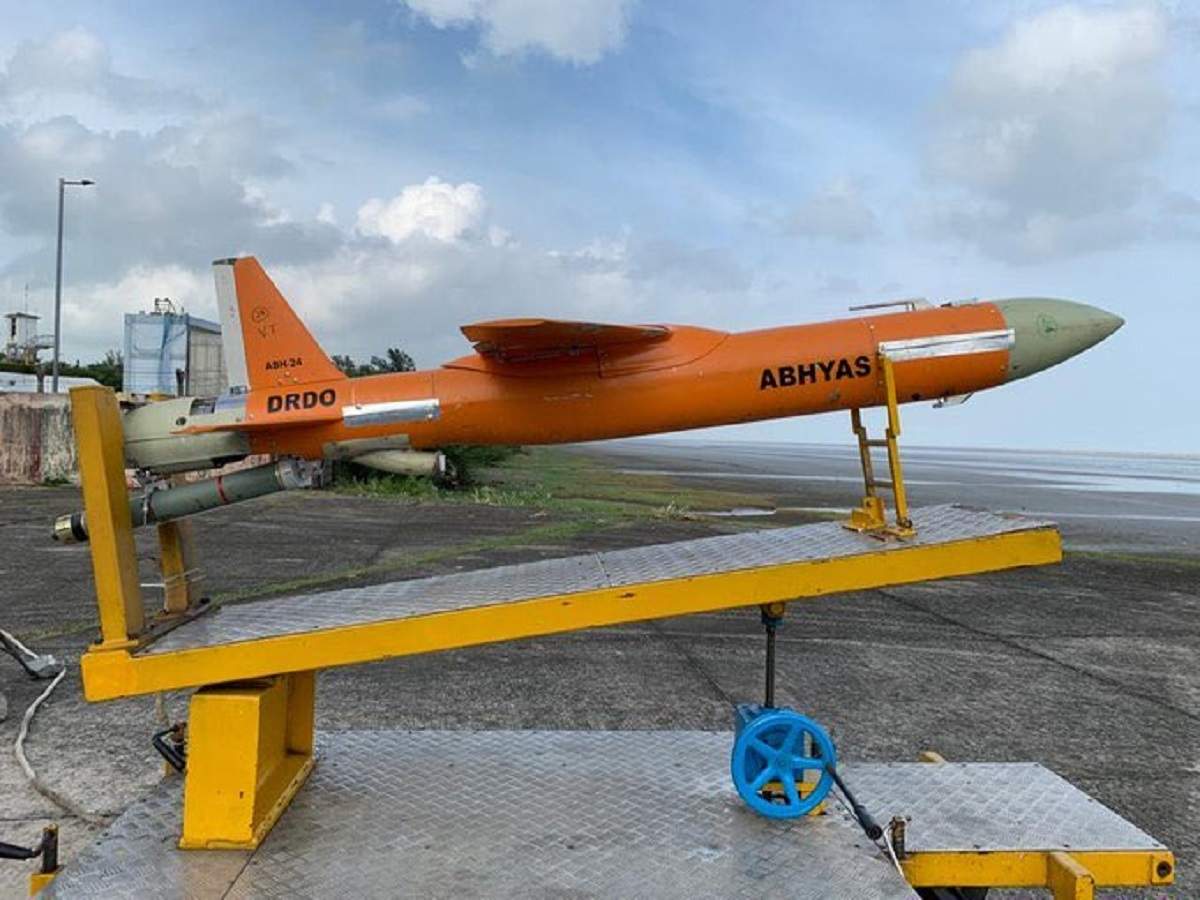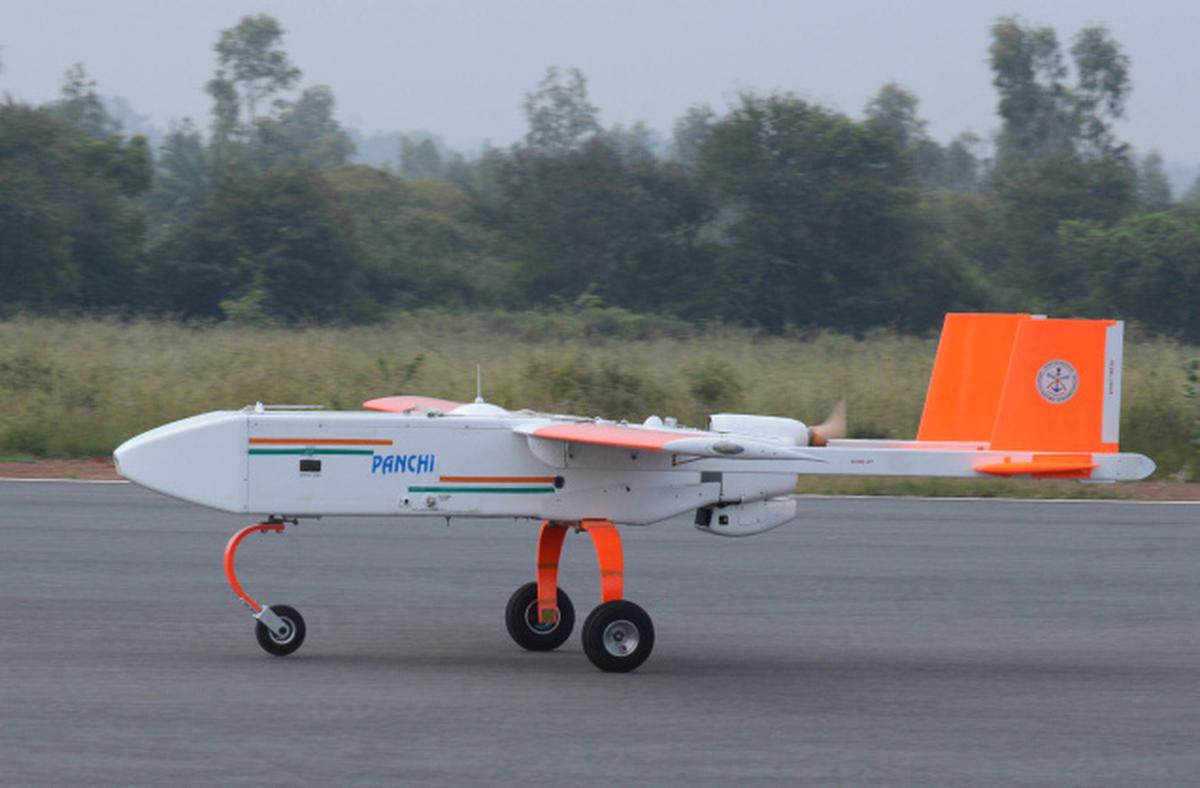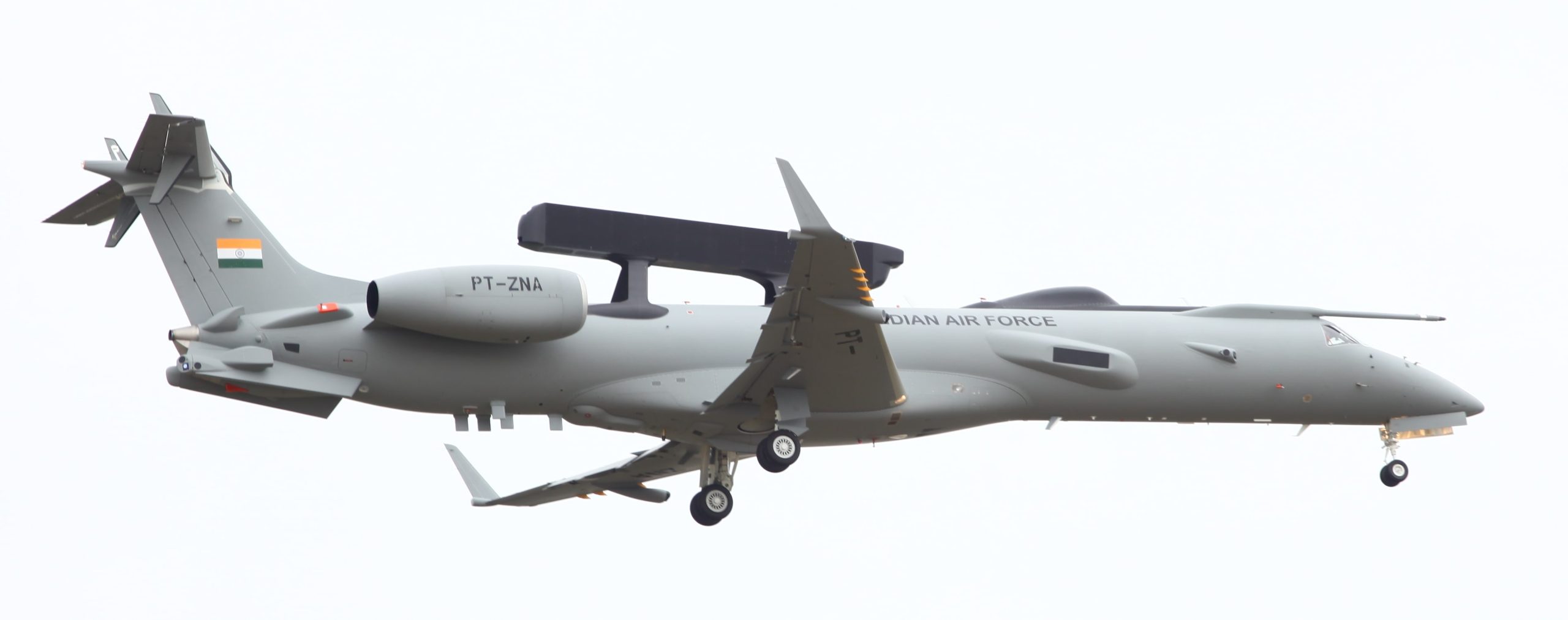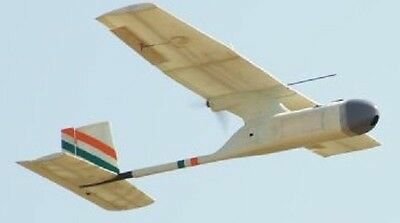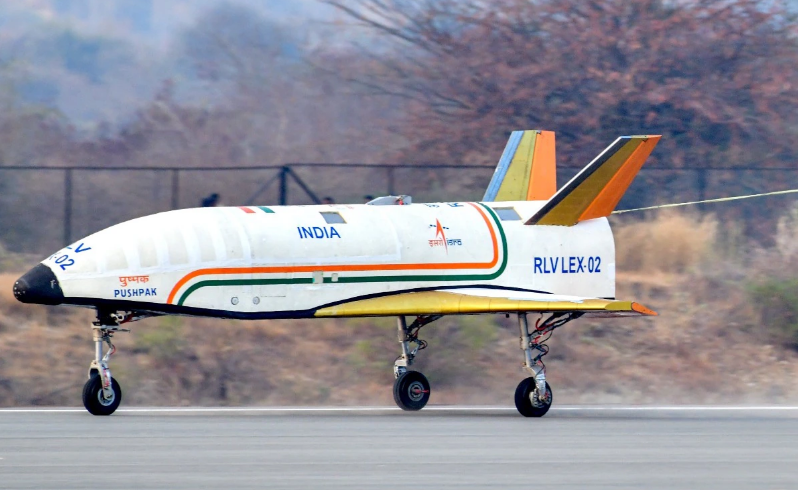Feed aggregator
Microvolts to kilovolts in milliseconds with one I/O pin

Figure 1’s silly-simple voltage-to-time ADC is an exercise in dynamic range. Assuming that it is used with a 10-MHz counter/timer, its resolution is roughly 10 µV per count for inputs around 0 V and 100 mV per count at 1 kV, and it never really over-ranges. The simple trick that provides this multi-decade measurement span is the inherent logarithmic behavior of RC timing networks.
Here’s how this one works.
Wow the engineering world with your unique design: Design Ideas Submission Guide
 Figure 1 U1 works with R1, R2, and C1 to logarithmically digitize 0 kV to 1 kV inputs while tying up only one microcontroller I/O pin.
Figure 1 U1 works with R1, R2, and C1 to logarithmically digitize 0 kV to 1 kV inputs while tying up only one microcontroller I/O pin.
Between conversions, U1’s reset pin 4 is held active-low either by the connected GPIO pin, or by U1 itself. Using a 555 in this self-resetting mode is unusual but is very handy here. This holds the C1 at zero or very near, since the Ron of pin 7’s open-drain FET is typically just 15ohms.
A conversion starts when the I/O pin is programmed for output and pulsed high, overriding U1 pin 3 (Out) and releasing the reset as sketched in Figure 2. The I/O pin is then immediately tri-stated and reprogrammed as input, gating an internal counter/timer peripheral for measurement of the conversion time T.
Because U1’s pin 2 (Trigger) is held low, the end of reset also sets pin 3 high and releases pin 7, allowing C1 to begin to ramp positive. When it reaches the 2.048V (Threshold) voltage on pin 5, conversion will complete and the time T that was required to do so is the conversion result. Arrival of pin 5 at the threshold voltage drives pins 3 (Out) low, thereby both pin 4 (Reset) and GPIO, the latter being the “conversion complete” status bit to the microprocessor. Meanwhile, pin 7 is driven low to discharge C1. This process completes in about 12 µs, readying the converter for another cycle.

Figure 2 A single general-purpose tri-state I/O pin serves to both control and measure U1’s time-out. The pin is programmed for output and pulsed positive to start conversion, then tri-stated for timer input. Conversion time (T) is 10 ms for Vin = 0, decreasing to approximately 100 µs for Vin = 1 kV.
T versus Vin is given by the following equation:
T = C1(R1||R2)*Loge ((0.209Vin + 3.234) / (0.209Vin + 1.1919))
= 10.0ms*Loge ((0.209Vin + 3.234) / (0.209Vin + 1.1919))
This is plotted in Figure 3 for Vin = 10 mV to 1kV.

Figure 3 The conversion time (T) in milliseconds for Vin from 0.01 V to 1000 V.
To recover Vin from a T acquisition, do this:
Vin = (3.234 – 1.1919e(T/10.0ms))/(0.209(e(T/10.0ms) – 1))
Finally, here’s something in the nature of a reality check.
You might be wondering why R1 is shown as a series connection of four 1M resistors instead of a single 4M component. The answer is the somewhat obvious fact that 1 kV is some serious voltage and the somewhat less obvious fact that resistors, somewhat like capacitors, have voltage ratings. Resistors rated for 1 kV are not the usual breed of cat.
And speaking of cats, please remember the old story about what curiosity did to one unfortunate feline and consider that prudent and proper safety practices are literally vital when choosing to work with voltages of this magnitude.
Me–OW!
Stephen Woodward’s relationship with EDN’s DI column goes back quite a long way. Over 100 submissions have been accepted since his first contribution back in 1974.
Related Content
- Add one resistor to give bipolar LM555 oscillator a 50:50 duty cycle
- More gated 555 astable multivibrators hit the ground running
- Gated 555 astable hits the ground running
- Inverted MOSFET helps 555 oscillator ignore power supply and temp variations
The post Microvolts to kilovolts in milliseconds with one I/O pin appeared first on EDN.
The rise of MCU-enabled sensor designs

New MCUs are addressing fundamental challenges in sensor technology by offering ample memory, a rich set of interfaces, and most importantly, the ability to run intelligent software algorithms. The key enablers include incorporation of sensing-supportive processor cores and MEMS integration with MCUs.
Read full story at EDN’s sister publication, Planet Analog.
Related Content
- What’s Next for the Microcontroller?
- Sensor-fusion MCU kit from STMicroelectronics
- Air sensing module boasts 7 sensors, MCU and AI firmware
- New sensor and MCU technology are key to next-gen robots
- Microcontroller-based temperature sensors – Accuracy considerations
The post The rise of MCU-enabled sensor designs appeared first on EDN.
UK’s North East advanced material electronics sector to contribute over 7000 jobs and nearly £900m gross value-added in next five years
First Solar endows Missouri S&T professorship in Critical Energy Materials
Dominating the Skies: DRDO’s UAV Revolution
From the high-altitude surveillance of the Himalayas to the tactical maneuvering on the border, DRDO-developed drones and UAVs are silently shaping the contours of India’s defense. This article delves into the impressive array of unmanned systems born from the ingenuity of DRDO, exploring their diverse roles, cutting-edge technologies, and the strategic impact they have on India’s evolving security landscape.
- Rustom Series
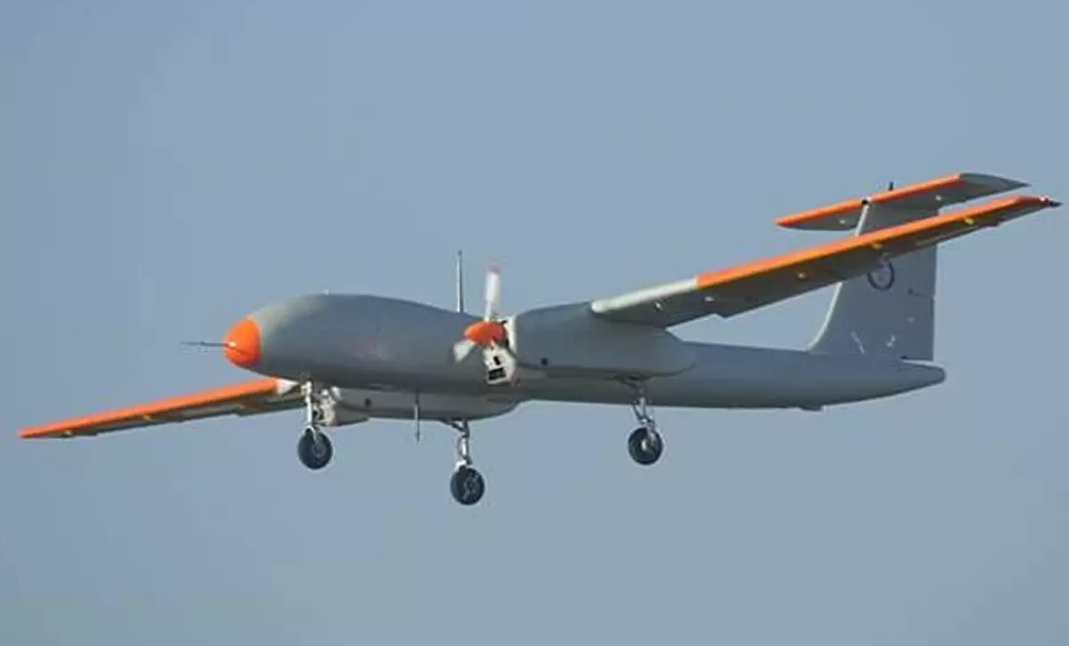 The Rustom series represents DRDO’s flagship UAV program, inspired by the National Aeronautical Laboratory’s (NAL) earlier designs. The series is named after Rustom Damania, a pioneer in Indian aerospace engineering. The Rustom series includes multiple variants tailored to specific missions:
The Rustom series represents DRDO’s flagship UAV program, inspired by the National Aeronautical Laboratory’s (NAL) earlier designs. The series is named after Rustom Damania, a pioneer in Indian aerospace engineering. The Rustom series includes multiple variants tailored to specific missions:
- Rustom-I:
- Type: Medium-Altitude Long-Endurance (MALE) UAV
- Primary Use: Intelligence, Surveillance, and Reconnaissance (ISR)
- Key Features:
- Endurance: Up to 12 hours
- Payload capacity: 75 kg
- Operational altitude: 22,000 feet
- Applications: Border surveillance and reconnaissance missions
- Rustom-II (TAPAS-BH-201):
- Type: Advanced MALE UAV
- Primary Use: Long-endurance ISR missions with strike capabilities
- Key Features:
- Endurance: Over 24 hours
- Operational altitude: 35,000 feet
- Payload capacity: Up to 350 kg
- Status: Under extensive testing and trials for integration into the armed forces
- Rustom-H:
- Type: High-Altitude Long-Endurance (HALE) UAV
- Primary Use: Long-term surveillance and strategic ISR missions
- Status: Development phase
- Nishant
The Nishant series is a tactical Unmanned Aerial Vehicle (UAV) developed by India’s Defence Research and Development Organisation (DRDO). Specially designed for intelligence, surveillance, and reconnaissance (ISR) roles, Nishant was equipped with advanced electro-optic and infrared sensors. Launched via a hydro-pneumatic rail system, it played a crucial role in counter-insurgency and battlefield surveillance. Widely recognized for its operational effectiveness, Nishant marked a significant step in indigenous UAV development before being phased out for more advanced systems.
- Type: Tactical UAV
- Primary Use: Short-range ISR and battlefield surveillance
- Key Features:
- Launched via a mobile hydro-pneumatic rail launcher
- Payload: Electro-optic and infrared sensors
- Range: 160 km
- Endurance: 4.5 hours
- Notable Deployment: Widely used during counter-insurgency and border monitoring operations
- Status: Retired, replaced by more advanced systems
- Lakshya
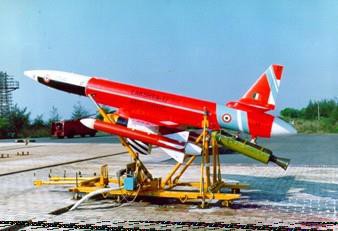 Lakshya is an advanced pilotless target aircraft developed to meet the needs of high-performance aerial target systems. Designed for simulating enemy threats during combat training and weapon evaluation, Lakshya offers remarkable versatility with features like remote control, pre-programmed flight paths, and high maneuverability. Its upgraded version, Lakshya-2, enhances operational capabilities, ensuring accurate replication of evolving aerial threats. This indigenously developed system underscores India’s prowess in defense technology innovation and continues to serve as a critical asset in the nation’s defense arsenal.
Lakshya is an advanced pilotless target aircraft developed to meet the needs of high-performance aerial target systems. Designed for simulating enemy threats during combat training and weapon evaluation, Lakshya offers remarkable versatility with features like remote control, pre-programmed flight paths, and high maneuverability. Its upgraded version, Lakshya-2, enhances operational capabilities, ensuring accurate replication of evolving aerial threats. This indigenously developed system underscores India’s prowess in defense technology innovation and continues to serve as a critical asset in the nation’s defense arsenal.
- Type: High-speed target drone
- Primary Use: Aerial target for training and weapon calibration
- Key Features:
- Operational altitude: 30,000 feet
- Speed: 0.7 Mach
- Applications: Simulating enemy aircraft for live-fire training
- Status: In active service, with multiple upgrades
- Abhyas
The DRDO Abhyas is an advanced high-speed expendable aerial target (HEAT) developed by the Defence Research and Development Organisation (DRDO) of India. Designed to simulate a variety of aerial threats for weapons testing and training, Abhyas features a radar cross-section (RCS) enhancer, an acoustic miss distance indicator (AMDI), and the ability to replicate different threat profiles. Launched using a twin-booster system, it operates on a gas turbine engine, offering high endurance and maneuverability. Abhyas exemplifies India’s commitment to indigenous defense technology development, supporting robust and realistic training scenarios for the armed forces.
- Type: High-speed expendable aerial target (HEAT)
- Primary Use: Testing surface-to-air and air-to-air missile systems
- Key Features:
- Turbojet engine for extended performance
- Maximum altitude: 5 km
- Applications: Weapon evaluation and air defense training
- Status: Under induction and operational use
- Panchi
- Type: Wheeled version of the Nishant UAV
- Primary Use: ISR operations with a runway-based takeoff and landing capability
- Key Features:
- Enhanced flexibility compared to Nishant
- Longer endurance due to reduced launch constraints
- Netra (Developed in collaboration with IdeaForge)
The DRDO Netra is India’s indigenous Airborne Early Warning and Control (AEW&C) system. Mounted on an Embraer EMB-145 platform, Netra features advanced radar and surveillance systems capable of tracking aerial and ground-based targets over a wide range. With a 240-degree coverage and state-of-the-art communication capabilities, it plays a vital role in enhancing situational awareness and supporting tactical operations.
- Type: Mini UAV
- Primary Use: Urban surveillance and crowd monitoring
- Key Features:
- Lightweight quadcopter design
- Real-time video surveillance capability
- Applications: Disaster management, border infiltration monitoring, search and rescue etc.
- Notable Usage: Extensively used during search-and-rescue operations and for monitoring sensitive areas
- Aura (Autonomous Unmanned Research Aircraft)
The AURA program represents India’s ambitious leap into developing an indigenous Unmanned Combat Aerial Vehicle (UCAV). Spearheaded by the Defence Research and Development Organisation (DRDO), AURA is designed for stealth and precision, capable of delivering strategic payloads with minimal detection. Envisioned with advanced composite materials and autonomous systems, it symbolizes a significant advancement in India’s defense technology, aiming to reduce reliance on imports and fortify the nation’s aerial combat capabilities.
- Type: Unmanned Combat Aerial Vehicle (UCAV)
- Primary Use: Stealth operations and precision strikes
- Key Features:
- Design: Flying wing configuration for stealth
- Payload: Precision-guided munitions and ISR equipment
- Status: Development phase with significant potential for high-impact defense missions
- Imperial Eagle
Imperial Eagle is an advanced tactical Unmanned Aerial Vehicle (UAV) developed in collaboration with private industry partners. Designed primarily for surveillance and reconnaissance, the Imperial Eagle is equipped with state-of-the-art sensors and communication systems to support military and paramilitary operations. Its compact design and high endurance make it ideal for monitoring sensitive areas, providing real-time intelligence to enhance operational effectiveness.
- Type: Tactical UAV
- Primary Use: Short-range reconnaissance
- Key Features:
- Lightweight and portable
- Applications: Counter-insurgency and tactical surveillance
- Status: Limited deployment, with potential for scaling
- Pushpak
The NAL/ADE Pushpak is an autonomous Unmanned Aerial Vehicle (UAV) jointly developed by the National Aerospace Laboratories (NAL) and the Aeronautical Development Establishment (ADE), divisions of DRDO. Designed for tactical operations, Pushpak is a lightweight, high-performance UAV primarily intended for surveillance, reconnaissance, and intelligence gathering. With advanced avionics, real-time data transmission capabilities, and robust design, it plays a vital role in enhancing situational awareness across varied terrains, underscoring India’s progress in indigenous UAV technology.
- Type: Fixed-wing UAV
- Primary Use: Environmental monitoring and ISR missions
- Key Features:
- Compact design for ease of deployment
- Applications: Disaster management and environmental surveys
Conclusion
India’s journey into UAV and drone technology, spearheaded by DRDO, reflects a bold vision of self-reliance and innovation in defense. From surveillance-focused UAVs like Nishant to cutting-edge systems like Aura, DRDO’s achievements showcase a blend of ingenuity and strategic foresight. These advancements not only strengthen India’s defense capabilities but also position the nation as a global contender in unmanned aerial systems. As DRDO continues to push the boundaries of technology, it paves the way for a future where Indian innovation becomes a cornerstone of national and global security.
The post Dominating the Skies: DRDO’s UAV Revolution appeared first on ELE Times.
Element Six unveils copper diamond composite to power advanced semiconductor devices
SemiQ launches QSiC 1700V series of high-reliability, low-loss SiC MOSFETs
VIPower full bridge with real-time diagnostics reduces complexity and cost of automotive drives
The VNH9030AQ integrated full-bridge DC motor driver handles diverse automotive uses including functional-safety applications. As well as integrating advanced diagnostics, the driver has a dedicated pin for real-time output status that saves external circuitry and slims the bill of materials.
With RDS(on) of 30mΩ per leg, the VNH9030AQ efficiently handles mid- and low-power DC motor driven applications such as door-control modules, washer pumps, powered lift gates, powered trunks, and seat adjusters.
Contributing to the driver’s high overall efficiency, and saving external components, integrated non-dissipative current-sense circuitry monitors the current flowing through the device to distinguish each motor phase. The standby power consumption is very low over the full operating temperature range, easing use in zonal controller platforms.
The VNH9030AQ integrates the high-side and low-side MOSFETs with gate drivers, diagnostics, and protection against overvoltage transients, undervoltage, short-circuit conditions, and cross conduction. Flexibility to configure the MOSFETs either in parallel or in series allows use in systems involving multiple motors or to meet other specific requirements.
The new driver is part of a family of devices that leverage ST’s latest VIPower M09 technology, which permits efficient, monolithic integration of power and logic circuitry. All products feature an innovative 6mm x 6mm thermally enhanced triple-pad QFN package designed for optimal underside cooling and share a common pinout to ease layout and software reuse.
The post VIPower full bridge with real-time diagnostics reduces complexity and cost of automotive drives appeared first on ELE Times.
Please forgive me
 | submitted by /u/Canadian_Rubles [link] [comments] |
✅ Оголошується конкурс на заміщення посад
Національний технічний університет України «Київський політехнічний інститут імені Ігоря Сікорського» оголошує конкурс на заміщення вакантних посад

